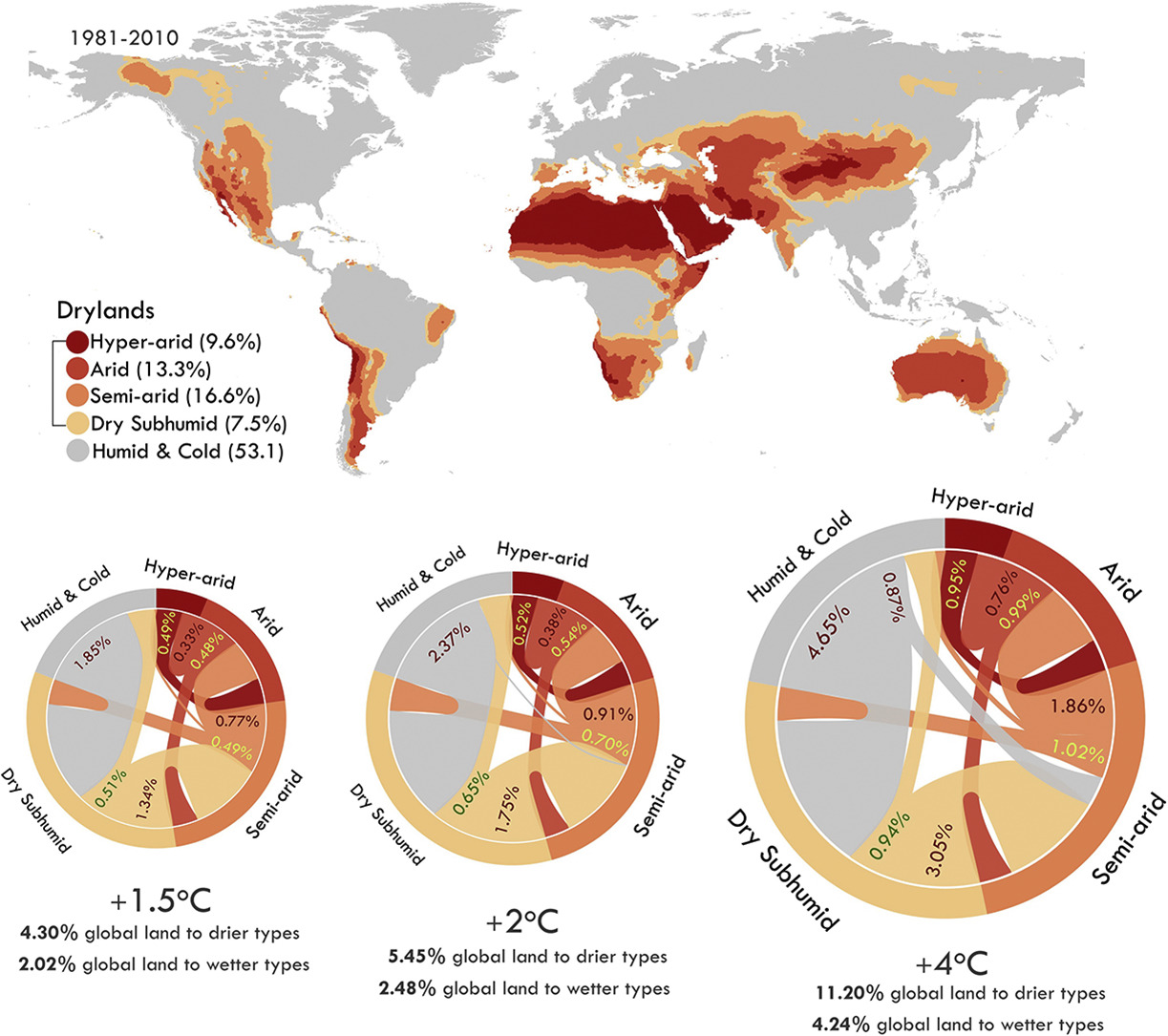Highlights
- Dryland areas are vital ecosystems, highly sensitive to climatic changes.
- New higher resolution climate projections used to examine future aridity for RCP8.5
- The drylands could increase by an additional 7% of the global land surface by 2100.
- Up to 1.9 billion people could avoid living in drylands by keeping to 1.5 °C vs 4 °C.
Graphical abstract

Abstract
Drylands are vital ecosystems which cover almost 47% of the Earth’s surface, hosting 39% of the global population. Dryland areas are highly sensitive to climatic changes and substantial impacts are foreseen under a warming climate. Many studies have examined the evolution of drylands in the future highlighting the need for improved capability of climate models to simulate aridity. The present study takes advantage of new higher resolution climate projections by the HadGEM3A Atmosphere Global Climate Model using prescribed time varying SSTs and sea ice, provided by a range of CMIP5 climate models under RCP8.5. The aim of the higher resolution models is to examine the benefit of the improved representation of atmospheric processes in the dryland research and to see where these results lie in the range of results from previous studies using the original CMIP5 ensemble. The transient response of aridity from the recent past until the end of the 21st century was examined as well as the expansion of global drylands under specific levels of global warming (1.5 °C, 2 °C and 4 °C). Dryland changes were further assessed at the watershed level for a number of major global river basins to discuss implications on hydrological changes and land degradation. The areal coverage of drylands could increase by an additional 7% of the global land surface by 2100 under high end climate change. At a 4 °C warmer world above pre-industrial, 11.2% of global land area is projected to shift towards drier types and 4.24% to wetter. At the same level of warming the number of humans projected to live in drylands varies between 3.3 and 5.2 billion, depending on the socioeconomic developments. By keeping global warming levels to 1.5 °C, up to 1.9 billion people could avoid living in drylands compared to a 4 °C warmer world of low environmental concern.
Koutroulis AG (2019) Dryland changes under different levels of global warming. Sci. Total Environ., 655, 482–511. https://doi.org/10.1016/J.SCITOTENV.2018.11.215
